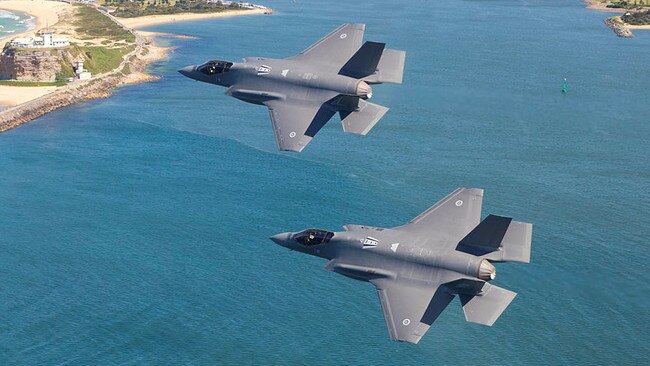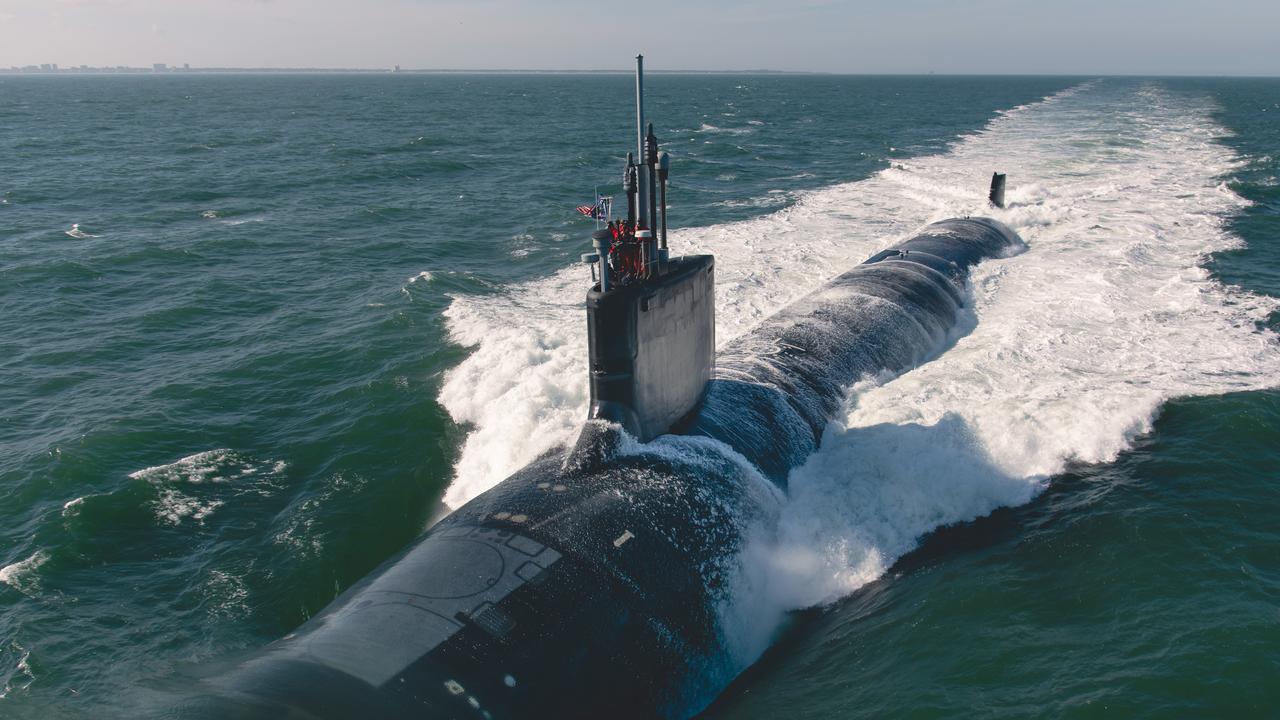F-35A stealth jets ready for operations, Defence says
Australia’s fleet of F-35A Lightning II stealth jets has been declared ready to send on operations.

Australia’s fleet of F-35A Lightning II stealth jets has been declared ready to send on operations, giving the nation an air capability edge against all but the most advanced opponents.
After two years of testing, Defence has certified the fifth-generation Joint Strike Fighters as achieving “initial operating capability”, allowing them to be deployed on combat missions should the need arise.
The RAAF took delivery of its 30th F-35A — the conventional take-off and landing variant being purchased by Australia — in September, and has another three awaiting shipping in the US.
Australia will eventually acquire 72 of the aircraft at a total program cost of $17bn.
Defence Minister Linda Reynolds said the fighter jets — which cost $140m each and have suffered a series of technical issues, cost blowouts and delays — were “key to our air combat capability”.
“The Australian Defence Force now has an F-35A squadron ready to conduct technologically advanced strike and air combat roles, and another squadron dedicated to providing world-class training here in Australia,” Senator Reynolds said. “Australia will continue to work with the US F-35 Joint Program Office and our industry partners as more aircraft are delivered through to 2023, and a mature capability is achieved.”
Australian Strategic Policy Institute senior defence capability analyst Malcolm Davis said the declaration of initial operating capability was “a big step forward” for the program, and set the stage for all 72 aircraft being purchased to be fully operational by 2023.
Dr Davis said the F-35 gave Australia an edge in advanced strike operations because of its stealthy design, and an information advantage over fourth-generation fighters, such as the Russian-designed Su-27/30, because of its advanced sensors.
“For air-to-air operations, it’s a ‘first look, first shot, first kill’ advantage that is critical,” he said. “For strike roles, the sensor integration and data fusion gives the pilot a knowledge advantage over an adversary, enabling the pilot to manoeuvre the aircraft around detected air defence threats and avoid detection before releasing precision guided weapons.”
Dr Davis said the F-35’s stealth advantage was likely to be eroded over time as potential adversaries — particularly major powers such as China — developed more sophisticated air defences. “Indeed, Chinese ground-based air defence systems are among the most advanced in the world, and already are challenging the ability of US forces to penetrate deeply. So as we begin F-35 operations, we can’t make the assumption that this platform will have an assured technological edge throughout its entire life … to the 2040s.”
He said more sophisticated electronic warfare capabilities, longer-range missiles and capabilities such as Boeing’s still-in-development Loyal Wingman drone would be needed to maintain its air superiority.
The aircraft’s range, about 2000km, was also an issue, Dr Davis said, requiring it to be supported by air-to-air refuellers to fly more than 1000km into the region. “If China were to forward deploy its fighter aircraft into South China Sea bases, or other future People’s Liberation Army air force airfields that might emerge … the F-35 may find itself more challenged in coming years,” he said.
Defence Industry Minister Melissa Price said more than 50 companies had shared in $2.7bn in F-35 program contracts.



